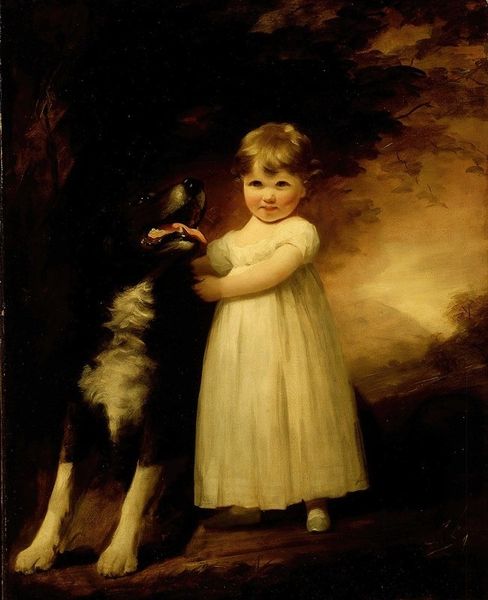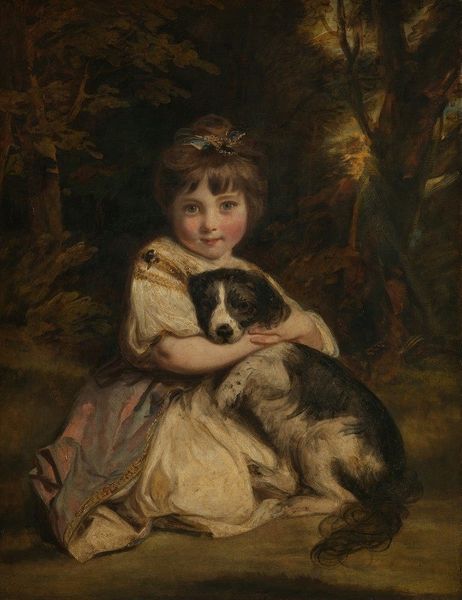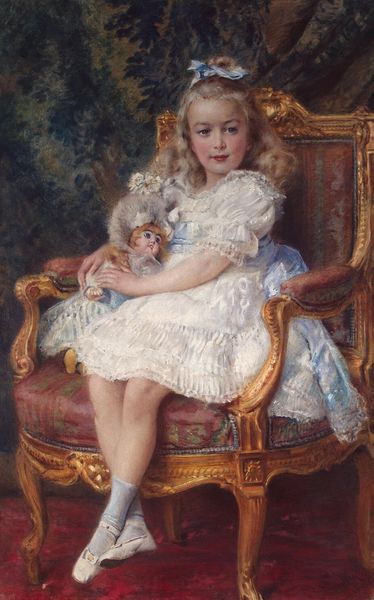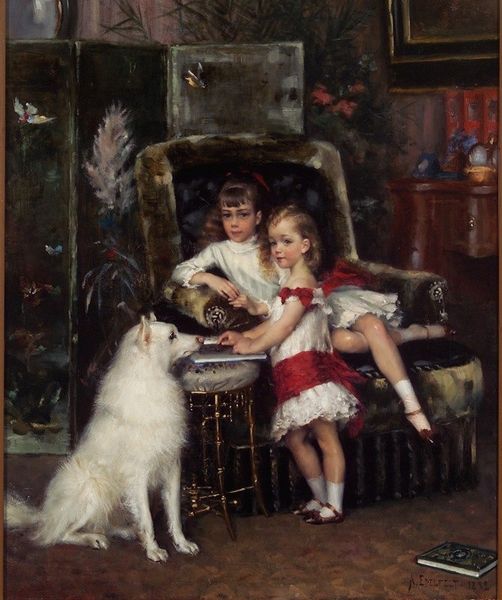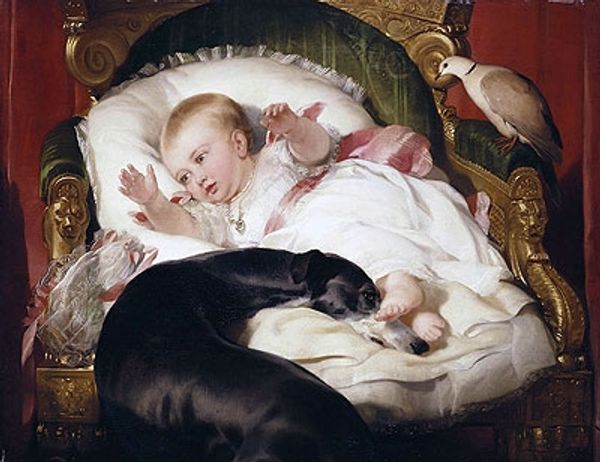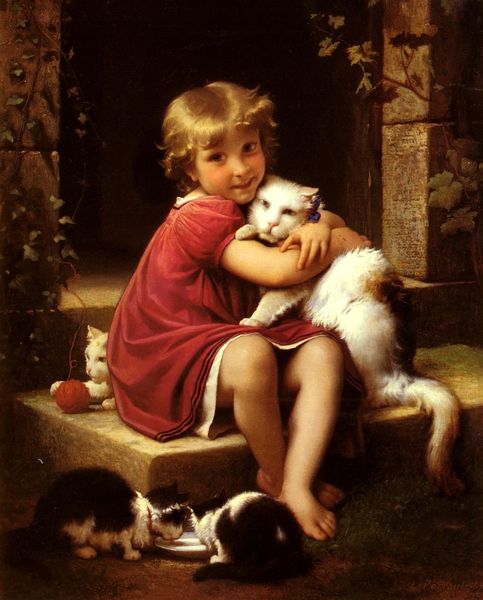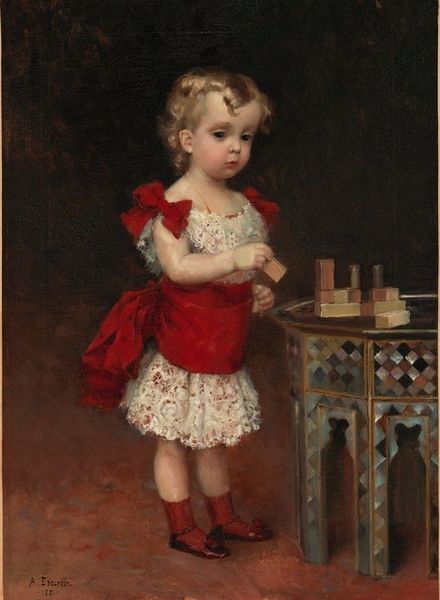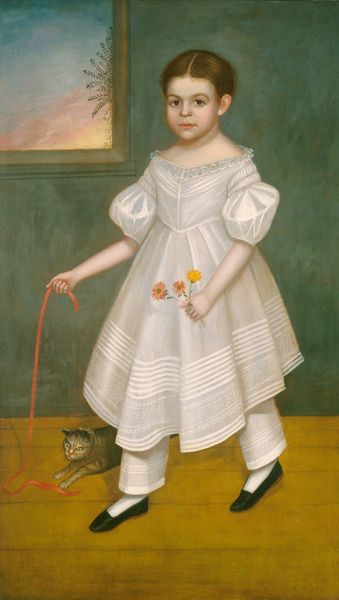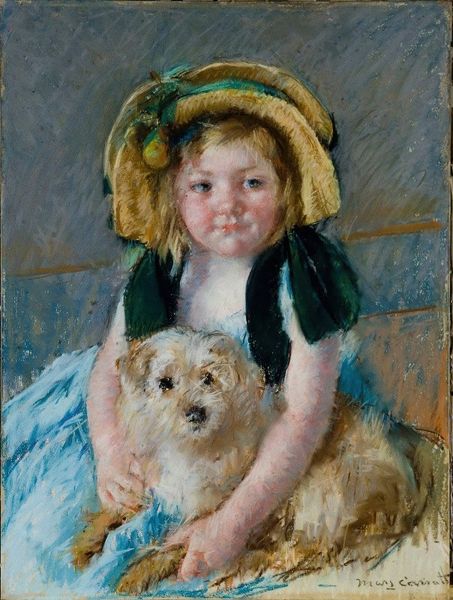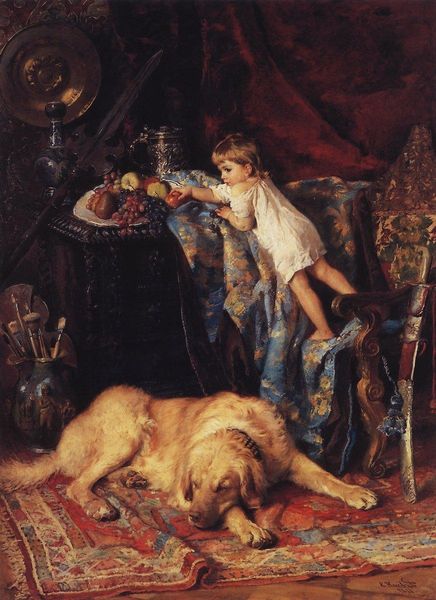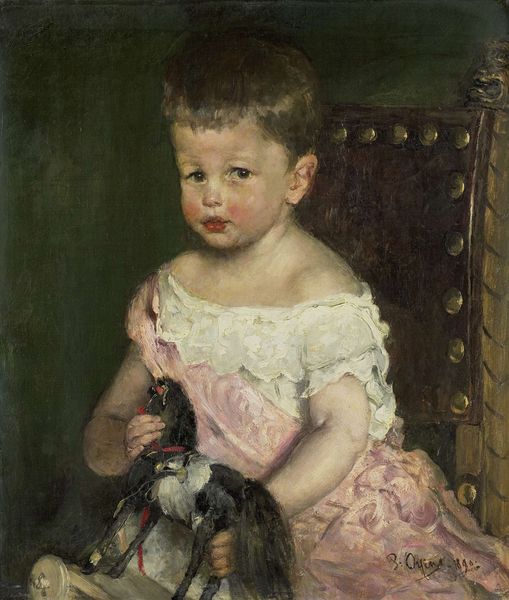
painting, oil-paint
#
portrait
#
figurative
#
narrative-art
#
portrait
#
painting
#
oil-paint
#
figuration
#
romanticism
#
genre-painting
Copyright: Public Domain: Artvee
Editor: This is "Portrait of Horace Delaroche," an oil painting by Paul Delaroche, from 1838. The baby’s expression is adorable, yet the image has an unexpected somber tone; what elements contribute to this atmosphere, in your opinion? Curator: The weightiness emerges, first, from a very dense structure. Observe the velvety curtain as a backdrop, its folds not only frame the subject but seem to press forward. It mirrors the infant's languid pose—how its body nearly melts into the velvet support. Light strikes the smooth skin, which is made distinct against all the surrounding cloth. How do you think the use of these contrasting textures changes the interpretation? Editor: It's almost like a study in contrasts! The textures create a visual hierarchy; the softness highlights the vulnerability of the child. What about the dog? It almost seems to be positioned as a secondary guardian, reinforcing the mood? Curator: Indeed, notice how the dog acts as a contrasting pillar of form, its firm gaze and rigid posture a counterpoint to the baby’s relaxed state. It creates a tension. This Romantic-era portrait, then, uses a tension and balance of shapes to convey more than mere likeness, wouldn't you agree? Editor: Absolutely! I hadn't considered the shapes of the figures in relation to each other; that formal element significantly shifts the reading of the painting. Curator: Precisely. This is why delving into structural components offers new avenues through which to see the subject.
Comments
No comments
Be the first to comment and join the conversation on the ultimate creative platform.
